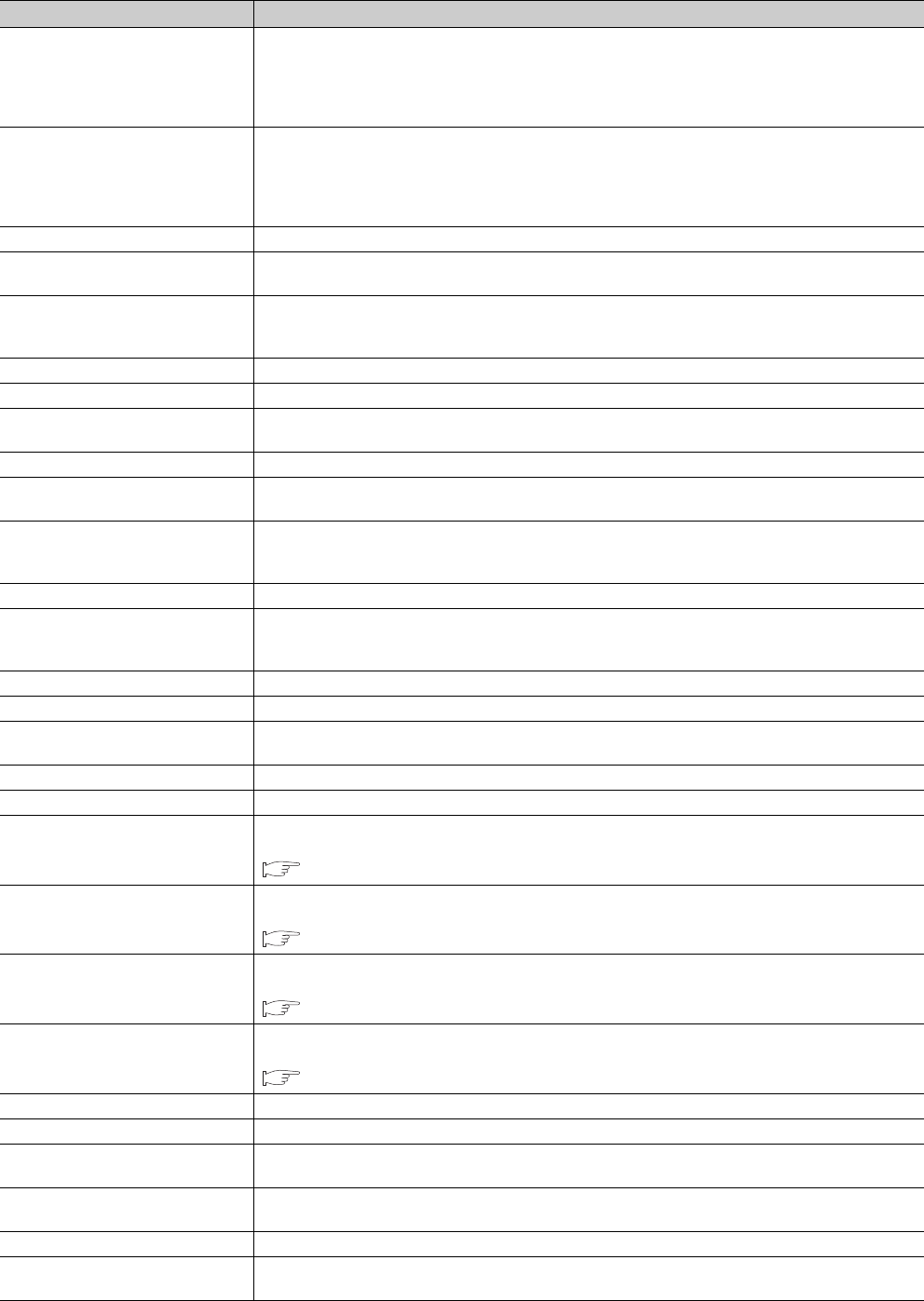
16
Master station
A station that controls the entire network. Only one master station can be used in a network.
This station serves as a safety station or a standard station, and can perform cyclic transmission and transient
transmission with all stations.
When set as a safety station, the station can perform safety communication with another safety station on the
same network.
Local station
A station that serves as a safety station or a standard station. This station can perform cyclic transmission and
transient transmission with the master station and other local stations.
When set as a safety station, the station can perform safety communication with another safety station on the
same network. The station is controlled by programs in the CPU module or other equivalent modules on the
station.
Remote I/O station A station that exchanges I/O signals (bit data) with the master station by cyclic transmission
Remote device station
A station that exchanges I/O signals (bit data) and I/O data (word data) with another station by cyclic transmission.
This station responds to a transient transmission request from another station.
Intelligent device station
A station that exchanges I/O signals (bit data) and I/O data (word data) with another station by cyclic transmission.
This station responds to a transient transmission request from another station and also issues a transient
transmission request to another station.
Slave station A generic term for a local station, remote I/O station, remote device station, and intelligent device station
Reserved station A station reserved for future use. This station is not actually connected, but counted as a connected station.
Relay station
A station that includes two or more network modules. Data are passed through this station to stations on other
networks.
Data link Generic term for cyclic transmission and transient transmission
Seamless communication
Communication that allows users to access a different kind of networks without having to consider the differences
as if data were exchanged within one single network.
Routing
A process of selecting paths for communication with other networks.
CC-Link IE Field Network requires communication paths to be preset using routing parameters to communicate
with stations on different networks.
Dedicated instruction An instruction that simplifies programming for using functions of intelligent function modules
Link dedicated instruction
A dedicated instruction used for transient transmission with a programmable controller on another station.
This instruction allows a master/local module to communicate with programmable controllers on the same network
(CC-Link IE Field Network) and on other networks (Ethernet, CC-Link IE Controller Network, and MELSECNET/H).
Return Processing that restarts data link when a station recovers from an error
Disconnection Processing that stops data link if a data link error occurs
Loopback
A function that disconnects the station in which an error has occurred, and continues data link with the stations that
are operating normally. Stations connected after the faulty station can also continue data link.
Device A device (X, Y, M, D, or others) in a CPU module
Link device A device (RX, RY, RWr, or RWw) in a module on CC-Link IE Field Network
Remote input (RX)
Bit data input from a slave station to the master station (For some areas in a local station, data are input in the
opposite direction.)
Page 103, Section 8.2.1
Remote output (RY)
Bit data output from the master station to a slave station (For some areas in a local station, data are output in the
opposite direction.)
Page 103, Section 8.2.1
Remote register (RWr)
Word data input from a slave station to the master station (For some areas in a local station, data are input in the
opposite direction.)
Page 103, Section 8.2.1
Remote register (RWw)
Word data output from the master station to a slave station (For some areas in a local station, data are output in the
opposite direction.)
Page 103, Section 8.2.1
Link special relay (SB) Bit data that indicates the operating status and data link status of a module on CC-Link IE Field Network
Link special register (SW) Word data that indicates the operating status and data link status of a module on CC-Link IE Field Network
Link scan (Link scan time)
Time required for all the stations on the network to transmit data. The link scan time depends on data volume and
the number of transient transmission requests.
Link refresh
Data transfer between a link device in a module on CC-Link IE Field Network and a device in a CPU module. Link
refresh is performed in the END processing of the CPU module's sequence scan.
Baton pass A token to send data over a network
Buffer memory
A memory in an intelligent function module, where data (such as setting values and monitoring values) exchanged
with a CPU module are stored
Term Description


















